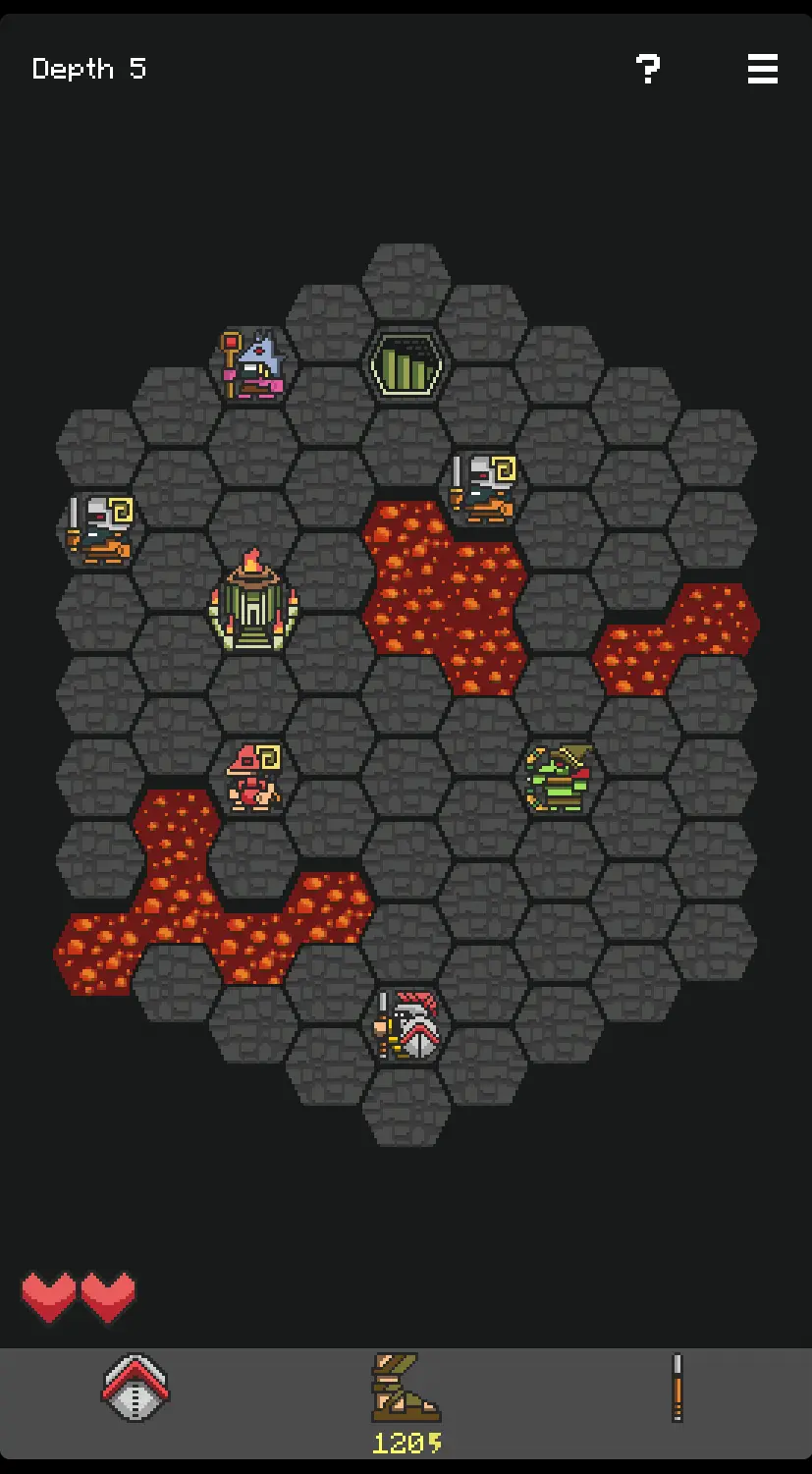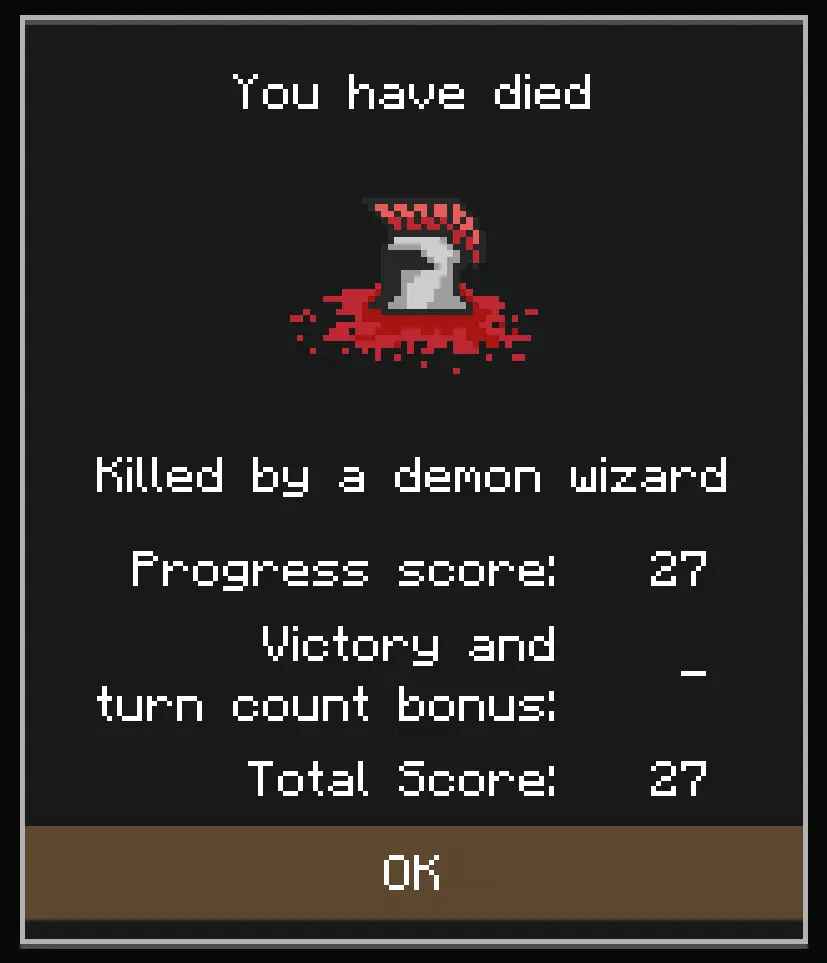by Dan McAlister
I love strategy games. I’m also bad at them. Hoplite gives me space to love strategy, and be bad at it.
What Is It?

Hoplite is a strategy game for one player. You control a hoplite, a kind of classical-era soldier, descending through levels of the underworld. Each level plays out like a simple board game filled with hazards and monsters. Every turn you choose one action for your hoplite, like moving, leaping, or throwing your spear. After you take an action, all of the enemies take their own actions to corner and attack you. The goal of each level is to clear enemies from the board and safely reach the stairs, leading you downward to a more difficult floor. Your overarching goal is to descend 16 floors and retrieve the mythical Fleece of Yendor.
But! You probably won’t get to the Fleece for a while. Hoplite is also a roguelike, a niche genre known for its difficulty. Don’t worry, though. It’s kinder than most roguelikes, and is both an excellent entry point for the genre and a stellar experience on its own.
Why I Love It.
Roguelikes are known for being hard, but their real defining features are permanent death and randomized levels. Permanent death means that when you fail, you start the game over from the beginning rather than a more recent midway-point. And when you do start over, randomized levels mean you’ll be looking at completely new levels rather than the ones you’ve already seen. Together, these two features challenge the player’s adaptability and general sense of strategy, as opposed to the player’s ability to trial-and-error their way through a consistent obstacle. This challenge is a major strength of the roguelike genre.
Play-throughs of Hoplite are short, usually lasting 10 to 30 minutes. Thanks to this brevity, failure doesn’t feel like the huge setback it can be in other roguelikes. It also accelerates the game’s feedback loop; it’s easier to analyze and learn from what went right and wrong in a 10 minute play session than a 2 hour one. I may be bad at strategy, but playing Hoplite feels like my failures are valuable learning experiences. I’m measurably growing as a player, and each play-through has the potential for new lessons.

Your First Game.
Each level you conquer gives you the option of upgrading your hoplite in a different way. For the first few play-throughs, I recommend focusing your upgrades on a single area rather than making a jack-of-all trades character. Balanced characters can be effective, but when you fail it’s harder to isolate why it is that you failed. But if, for example, you solely upgrade your spear throwing ability, you’ll learn more about when your spear is effective and when it isn’t. This approach teaches you more about the individual mechanics, which you can then apply to more balanced-character play-throughs.

Going Further.
Push for reaching the fleece, but take the time to be experimental. I first found health upgrades boring, and ignored them for a long time. When the game was getting stale, I made a run for the fleece choosing to only upgrade my health, and discovered a very different feeling experience.
Make irrational choices. Play in ways you normally wouldn’t. Going against your instincts will not always be successful, but in Hoplite it can always be educational.
The opinions in this post are expressly the views of the author and do not reflect the views of their employer(s) or any entities that they might otherwise be affiliated.